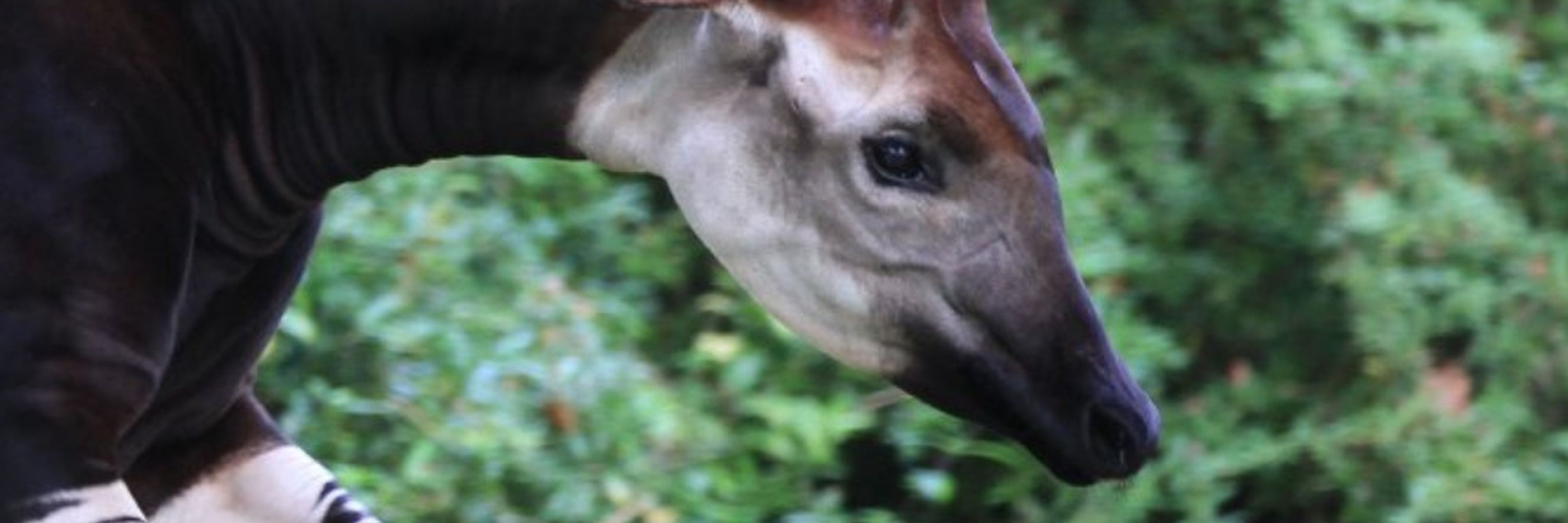
https://www.mammalian-biology.de
Host of Mammalian Biology https://link.springer.com/journal/42991
Threatened by habitat loss, logging, and subsistence hunting.
Occurs in mid- to high-elevation forest, which is increasingly fragmented.
Conservation is hindered by a lack of field data — highlighting a critical need for targeted ecological research.
Threatened by habitat loss, logging, and subsistence hunting.
Occurs in mid- to high-elevation forest, which is increasingly fragmented.
Conservation is hindered by a lack of field data — highlighting a critical need for targeted ecological research.
Primarily nocturnal and solitary; occupies large, overlapping home ranges.
Terrestrial movement is slow, but highly agile in trees, capable of leaping several meters between branches.
Primarily nocturnal and solitary; occupies large, overlapping home ranges.
Terrestrial movement is slow, but highly agile in trees, capable of leaping several meters between branches.
Body length: ~51–78 cm | Tail: up to 65 cm | Weight: ~10–18 kg
Dense, chocolate-brown to reddish fur; powerful forelimbs, large curved claws, and rotatable forepaws adapted for climbing.
Body length: ~51–78 cm | Tail: up to 65 cm | Weight: ~10–18 kg
Dense, chocolate-brown to reddish fur; powerful forelimbs, large curved claws, and rotatable forepaws adapted for climbing.
Its agility, adaptability, and quiet presence make it a fascinating example of desert survival.
Its agility, adaptability, and quiet presence make it a fascinating example of desert survival.
They communicate through clicks, chatters, and scent markings.
Though shy, they’ve adapted well to human structures—earning the nickname “miner’s cat” for visiting old cabins in search of food. 🏚️
They communicate through clicks, chatters, and scent markings.
Though shy, they’ve adapted well to human structures—earning the nickname “miner’s cat” for visiting old cabins in search of food. 🏚️
Their flexible diet helps them survive in harsh environments where food sources change with the seasons.
Their flexible diet helps them survive in harsh environments where food sources change with the seasons.
They’re expert climbers, using their semi-retractable claws and long, banded tails for balance as they navigate cliffs and crevices.
Their tail isn’t prehensile, but it’s essential for agility and communication. 🌀
They’re expert climbers, using their semi-retractable claws and long, banded tails for balance as they navigate cliffs and crevices.
Their tail isn’t prehensile, but it’s essential for agility and communication. 🌀
biologging techniques, which can contribute to decoding cryptic vocal
behaviors of mammals. This device would become a key growth driver for
improving the application of passive acoustic monitoring in
terrestrial ecosystems.
biologging techniques, which can contribute to decoding cryptic vocal
behaviors of mammals. This device would become a key growth driver for
improving the application of passive acoustic monitoring in
terrestrial ecosystems.
3/3 This finding reveals hidden biodiversity in one of the world’s
most threatened ecosystems, the Cerrado, and emphasizes the urgency of
conservation. Protecting this biome means safeguarding countless
undiscovered species and the ecological services they provide to
people and nature.

3/3 This finding reveals hidden biodiversity in one of the world’s
most threatened ecosystems, the Cerrado, and emphasizes the urgency of
conservation. Protecting this biome means safeguarding countless
undiscovered species and the ecological services they provide to
people and nature.
approach—combining genetics, chromosomes, and morphology —the authors
demonstrated that this population is distinct from all previously
known.
approach—combining genetics, chromosomes, and morphology —the authors
demonstrated that this population is distinct from all previously
known.
4/4 ⚠️ Conservation status:
Listed as Vulnerable (IUCN Red List). Populations decline due to habitat loss from agriculture & urbanization. Conservation focuses on restoring open grasslands and reintroducing colonies.
4/4 ⚠️ Conservation status:
Listed as Vulnerable (IUCN Red List). Populations decline due to habitat loss from agriculture & urbanization. Conservation focuses on restoring open grasslands and reintroducing colonies.
3/4 📡 Behavior & ecology:
Highly social, they live in colonies and communicate with alarm calls to warn conspecifics of predators. Diet is primarily seeds and grasses, with occasional insects.
3/4 📡 Behavior & ecology:
Highly social, they live in colonies and communicate with alarm calls to warn conspecifics of predators. Diet is primarily seeds and grasses, with occasional insects.
2/4 😴 Hibernation biology:
Sousliks spend up to 6 months in hibernation, lowering body temperature close to ambient levels. This extreme energy-saving strategy helps them survive winters with scarce food.
2/4 😴 Hibernation biology:
Sousliks spend up to 6 months in hibernation, lowering body temperature close to ambient levels. This extreme energy-saving strategy helps them survive winters with scarce food.
Conservation Status: Critically Endangered (IUCN)
Conservation Status: Critically Endangered (IUCN)
Groups typically include 2–9 individuals, often female-dominant (as in most lemurs).
Strong social bonds reinforced through allogrooming, play, and synchronized travel.
Groups typically include 2–9 individuals, often female-dominant (as in most lemurs).
Strong social bonds reinforced through allogrooming, play, and synchronized travel.
Use of anogenital scent glands for territorial marking and reproductive signaling.
Scent-marking occurs on branches and trunks, often accompanied by body rubbing or chest marking in males.
Use of anogenital scent glands for territorial marking and reproductive signaling.
Scent-marking occurs on branches and trunks, often accompanied by body rubbing or chest marking in males.
Silky Sifakas exhibit a complex communication system, essential for maintaining group cohesion, avoiding predators, and regulating social hierarchies.
🔊 Vocal Communication:
Call repertoire includes grunts, growls, and alarm calls.
Silky Sifakas exhibit a complex communication system, essential for maintaining group cohesion, avoiding predators, and regulating social hierarchies.
🔊 Vocal Communication:
Call repertoire includes grunts, growls, and alarm calls.
Prominent tooth comb used for grooming and scraping plant surfaces.
Primarily folivorous, with selective feeding on young leaves, seeds, and buds, facilitated by strong masseter and temporalis muscles.
Prominent tooth comb used for grooming and scraping plant surfaces.
Primarily folivorous, with selective feeding on young leaves, seeds, and buds, facilitated by strong masseter and temporalis muscles.

